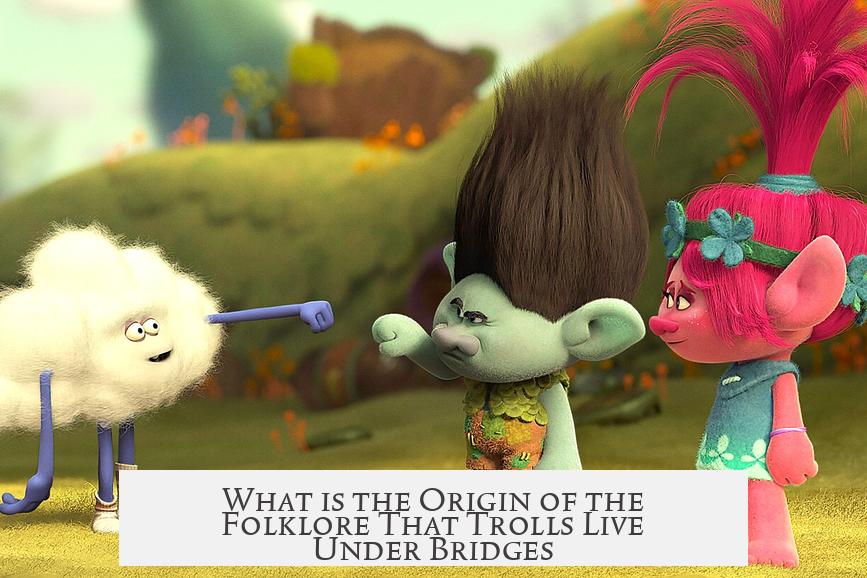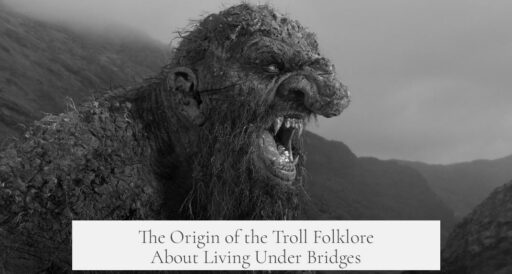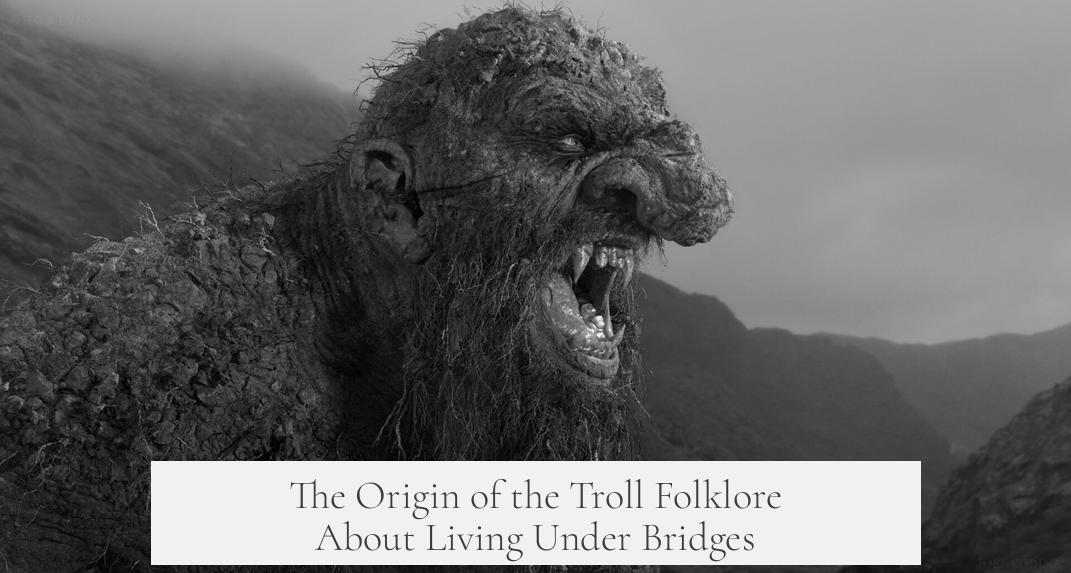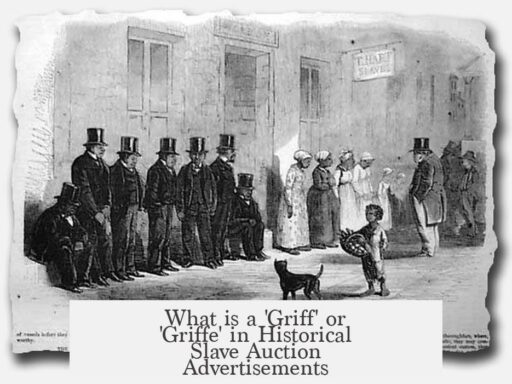The origin of the folklore that trolls live under bridges stems primarily from 19th-century Norwegian tales, specifically popularized in English by Sir George Webbe Dasent’s 1859 translation of Scandinavian folklore.
The troll concept entered the English language and imagination with Dasent’s work, especially through the story of The Three Billy Goats Gruff. This folk tale describes “a great ugly troll, with eyes as big as saucers, and a nose as long as a poker” dwelling beneath a bridge. This image became the defining representation of trolls for English speakers.
Peter Christen Asbjørnsen and Jørgen Engebretsen Moe originally collected these tales in Norway during the early 1800s. Their publication, Norske Folkeeventyr (Norwegian Folktales) from 1841, breathed literary life into a rich tradition of Scandinavian folklore. When Dasent translated these stories into English, trolls became a permanent fixture in English literature and popular culture.
While the story of trolls under bridges originated in Norwegian storytelling, the concept taps into an older, broader human motif. Historically, monsters or malevolent beings often inhabit liminal watery spaces in folklore and mythology.
- In English tradition, creatures similar to trolls, like giants or monsters, appear in ancient texts such as Beowulf, where Grendel and his mother live in swamps near human lands.
- Water crossings like swamps, causeways, and bridges represent boundaries where natural and social orders blur.
- Archaeological and historical evidence shows ritual activities, such as weapon offerings, performed at these crossing points from the Bronze Age to the Middle Ages.
This ritual activity indicates a long-standing unease, or symbolic significance, about crossing water boundaries. Troll stories at bridges may be modern representations of this deeper, anthropological anxiety.
Thus, the specific motif of trolls dwelling under bridges arises from a 19th-century cultural transmission of Norwegian folklore through Dasent’s translations. At the same time, it connects to a universal heritage of marking water crossings as mysterious or dangerous places guarded by monstrous figures.
| Aspect | Details |
|---|---|
| Origin of Word | Introduced to English in 1859 via Norwegian folklore translation |
| Key Story | The Three Billy Goats Gruff featuring a troll under a bridge |
| Norwegian Collectors | Asbjørnsen and Moe published Norwegian Folktales in 1841 |
| Anthropological Roots | Monsters at watery boundaries date to ancient English tradition |
| Ritual Practices | Weapons thrown into water at crossings from Bronze Age onward |
| Symbolism | Water crossing as sites of unease and ritual significance |
- Troll-under-bridge folklore began with 19th-century Norwegian tales introduced to English readers by Dasent.
- The Three Billy Goats Gruff story popularized the bridge-dwelling troll image.
- Earlier, monstrous beings near water crossings in English folklore reveal deeper human themes of boundary and danger.
- Water crossings held ritual importance, suggesting ancient symbolic anxiety linked to these locations.
- Modern troll stories reflect this long-standing cultural significance of watery liminal spaces.
What is the Origin of the Folklore That Trolls Live Under Bridges?

The folklore that trolls live under bridges mainly originates from Norwegian folktales introduced to the English-speaking world in the 19th century. Among these tales, “The Three Billy Goats Gruff” stands out as the classic story that vividly places a troll under a bridge. But why this specific setting? And how did this image become so ingrained in popular culture? Let’s dive into the origins and uncover the deeper roots of this fascinating folklore.
First, it’s crucial to understand where the word “troll” itself entered English. It snuck in through a translation in 1859, when Sir George Webbe Dasent brought Norwegian oral traditions to English readers. Specifically, Dasent translated “Norske Folkeeventyr” (Norwegian Folktales), collected by Peter Christen Asbjørnsen and Jørgen Engebretsen Moe, two giants of Scandinavian folklore. This marked the beginning of trolls—and their bridge-dwelling habit—grabbing a place in English literature and imagination.
Among the many Norwegian folktales, The Three Billy Goats Gruff shines as a tour de force. This tale features a “great ugly troll, with eyes as big as saucers, and a nose as long as a poker,” living right under a bridge. The image is so vivid it’s hard to shake. The story made trolls recognizable, memorable, and characteristically mean-hearted creatures that guard crossings. This portrayal is a bit less nuanced than in their homeland legends, but it undoubtedly shaped how English speakers pictured trolls.
Why under a bridge, though? You might wonder whether trolls had a historical fondness for architecture or specific geography. The answer lies deeper, rooted in anthropology and ritual practices surrounding water and crossings.
Places where water is crossed—rivers, swamps, or causeways—have long had a mysterious and uneasy reputation. Historical records, stretching back to the days of the Old English epic Beowulf, tell of monsters lurking in watery edge spaces. Grendel and his mother, called “ettins,” live in swamps by the borders of Hrothgar’s kingdom and represent threatening forces lurking in places of transition.
This uneasiness isn’t just storytelling flair. Archaeological and historical research shows that water crossings were sensitive cultural zones. For instance, weapons were constantly thrown into swampy causeways from the Bronze Age through the late Middle Ages. These places symbolized boundary breakdowns where normal rules didn’t always apply. Rituals performed at these crossings reflected a need to appease unseen forces or monsters that might haunt these liminal spaces.
So, the idea of monsters—or trolls—living under bridges taps into an ancient human concern. The water beneath a bridge wasn’t just a physical obstacle to cross; it was a symbol of change, danger, and the unknown. Stories about trolls guarding these spots reinforced caution and respect for these thresholds.
In short, the folklore of trolls under bridges isn’t just a quirky tale. It emerges from a rich blend of Norwegian storytelling, 19th-century literary taste, and deep-rooted cultural anxieties about crossing water. The troll became the perfect guardian or menace in a place where the ordinary met the unknown.
The Benefits of Understanding Troll Folklore Origins
Why bother with the origin story? Here’s what mastering this folklore offers:
- Contextual clarity: Knowing where the bridge-loving troll comes from enriches how we perceive classic children’s stories and modern fantasy.
- Insight on human psychology: Recognizing ancient fears about crossing boundaries helps us understand broader myths worldwide.
- Appreciation for cultural preservation: These stories show how oral tradition, translation, and literature shape shared folklore.
Can You Spot Troll Lore in Modern Places?

Trolls guarding water crossings are common in film, books, and games. But next time you read a story with a troll under a bridge, remember it’s a direct descendant of Norwegian folklore, filtered through English translations and sprinkled with an anthropological twist about boundary fears. The story isn’t just whimsy—it’s a window into historical human experience.
Recommendations for Exploring Troll Tales
- Read Dasent’s Popular Tales from the Norse to see the original translated lore.
- Explore Norwegian folktales by Asbjørnsen and Moe for broader context.
- Check out articles like those in the edited volume The Cross Goes North that analyze ritual activities at watery crossings for anthropological depth.
- Compare troll myths from other cultures to notice common themes of monsters at thresholds.
So, next time you stroll over a quaint bridge, ponder what ancient stories might be hiding underneath—whether it’s a grumpy troll or just the echoes of centuries-old cultural fears about water, boundaries, and monsters lurking at the edges.




